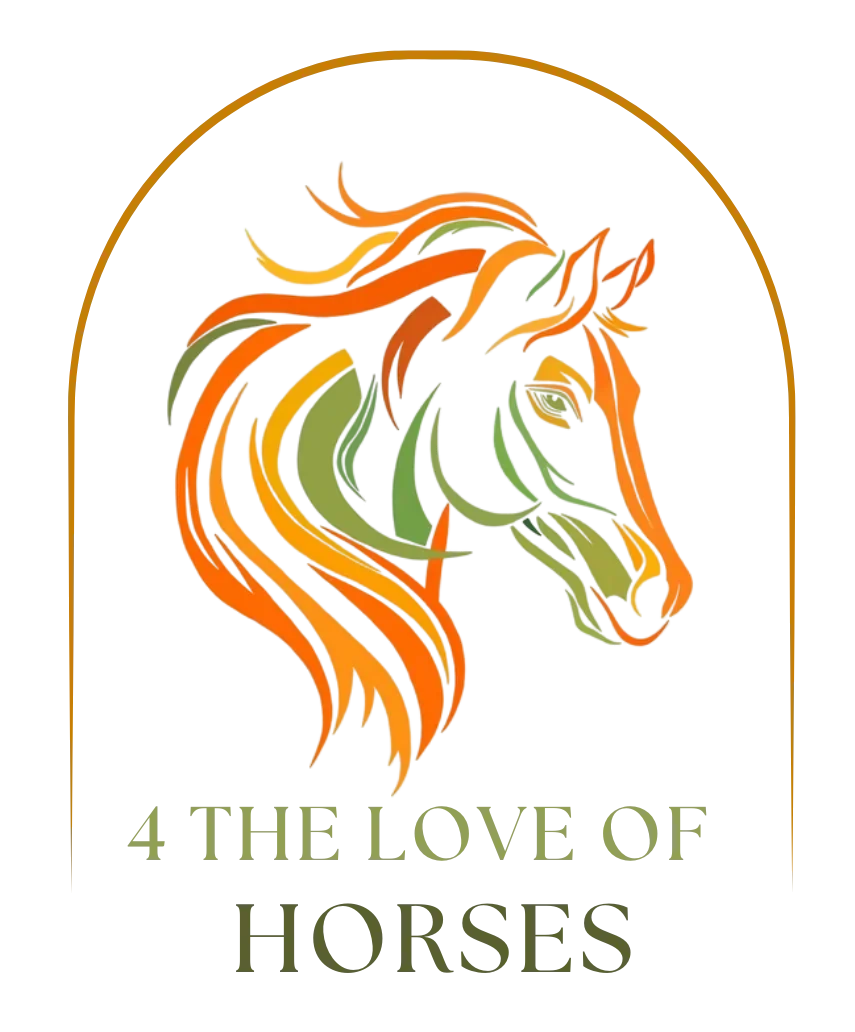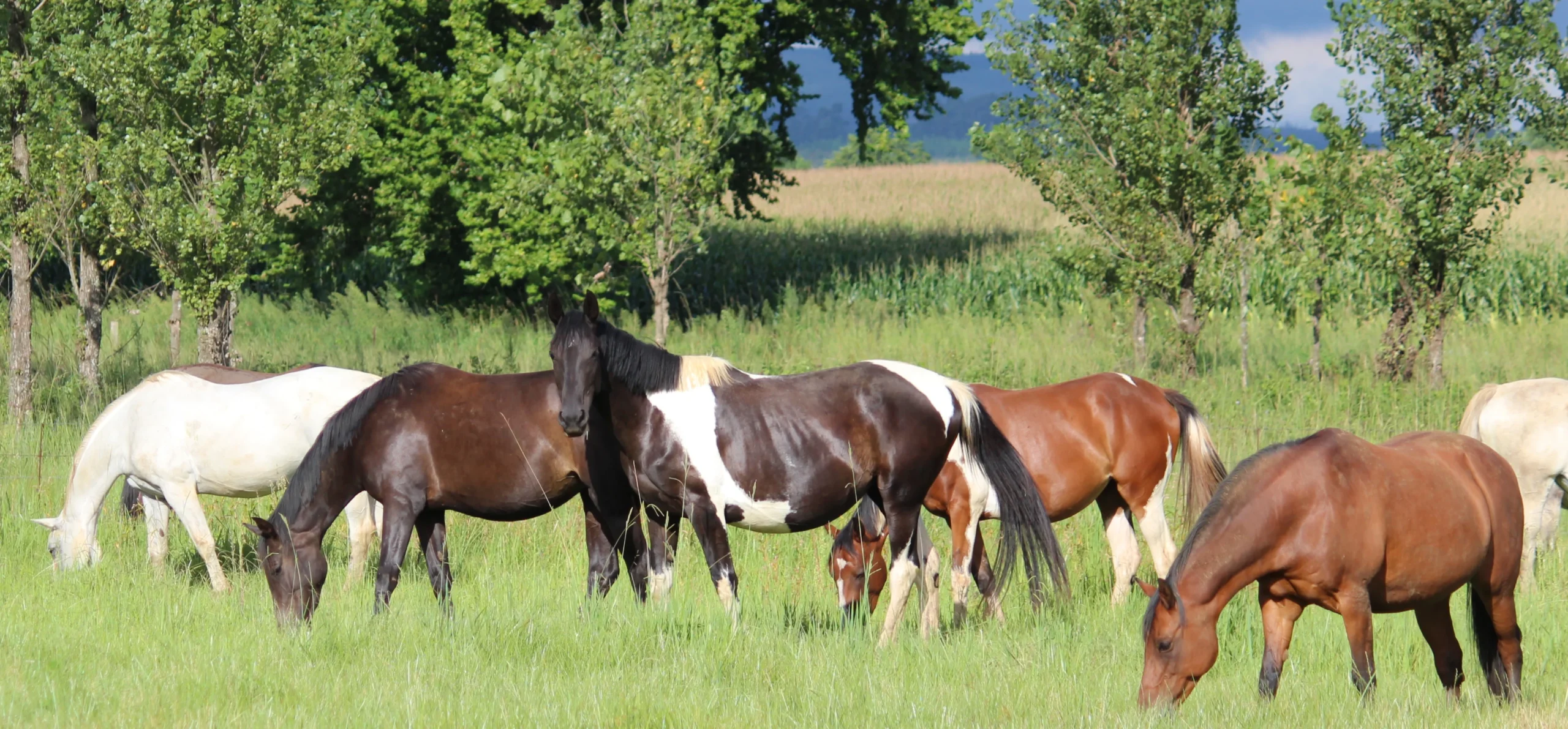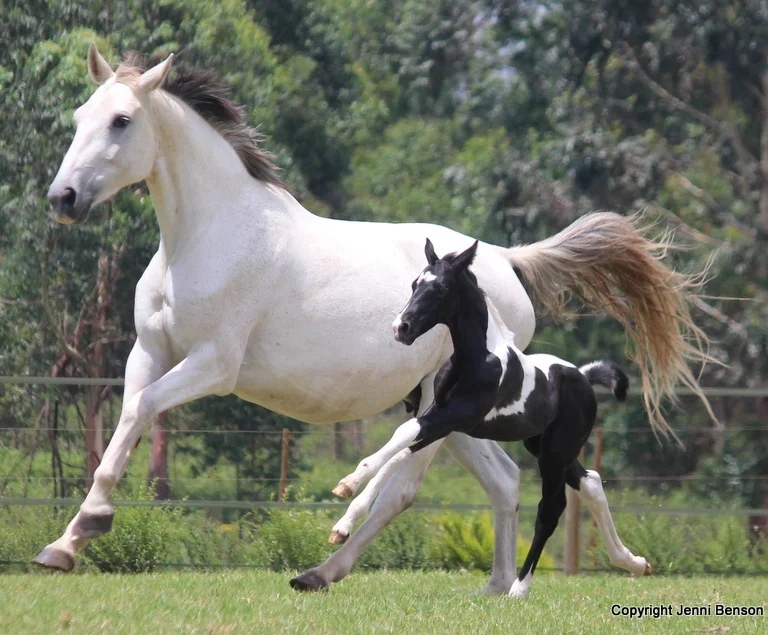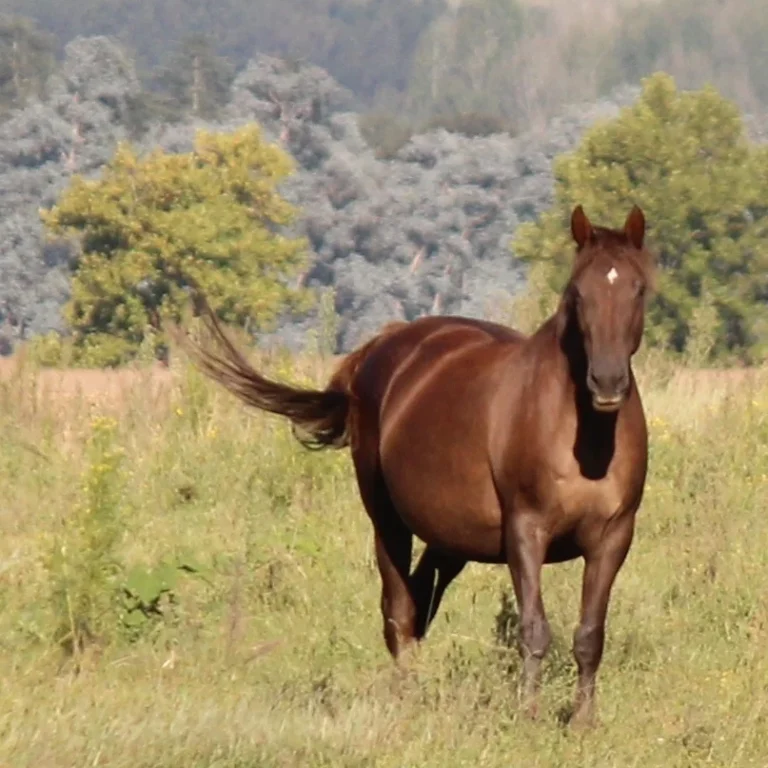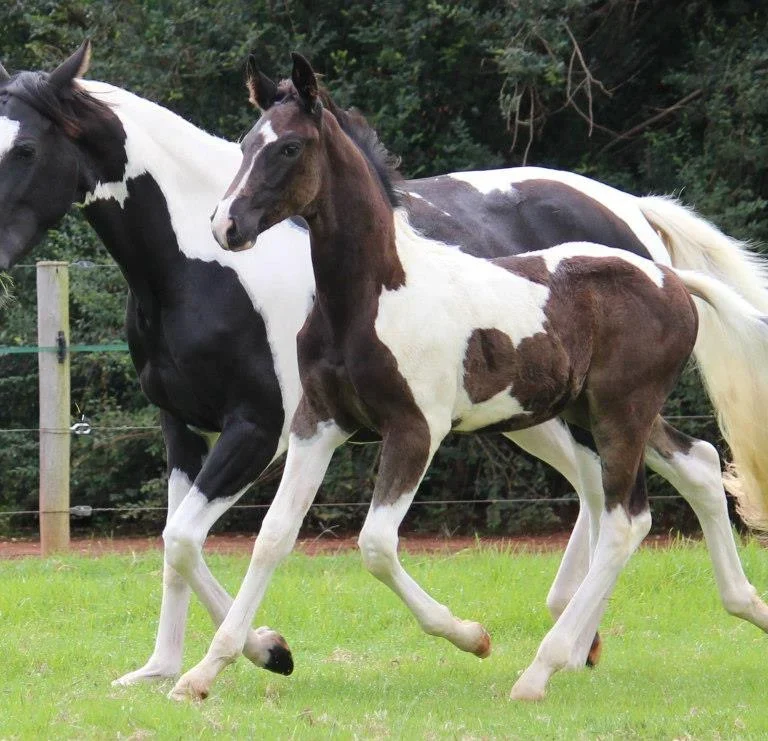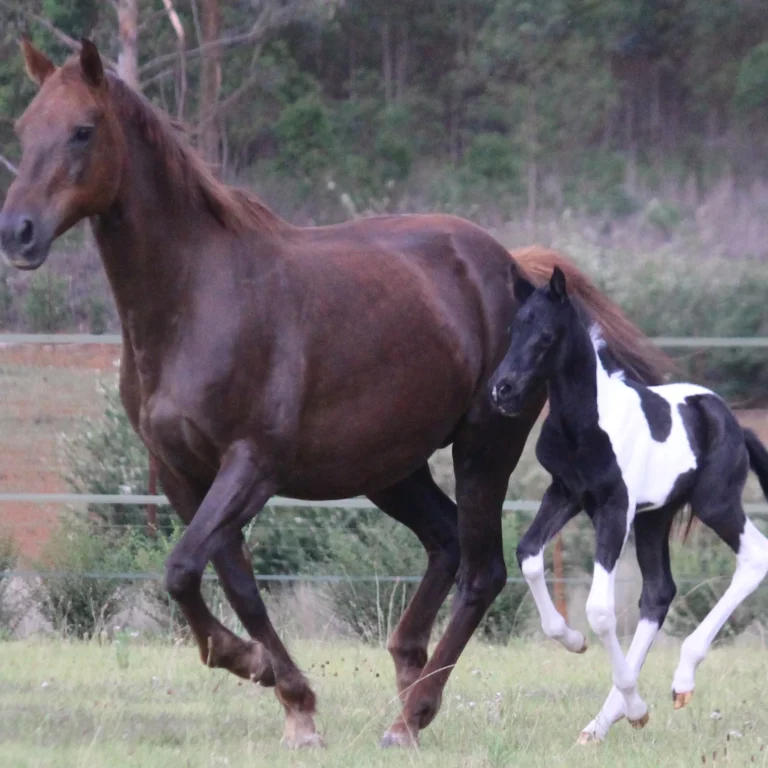Broodmare Nutrition Basics: Understanding the Timeline – Part 1
Welcome to our comprehensive five-part series on broodmare nutrition! Whether you’re a first-time breeder or managing a large breeding operation, understanding how to feed your mares properly throughout pregnancy and lactation is crucial for producing healthy foals and maintaining mare health. In this first installment, we’ll explore the basics of broodmare nutrition and dive deep into feeding strategies for early to mid-pregnancy.
Why Broodmare Nutrition Matters
Proper nutrition is the cornerstone of a successful breeding program. The nutritional demands placed on a broodmare change dramatically throughout pregnancy and lactation, and understanding these shifts is essential for producing healthy foals while maintaining the mare’s body condition and overall health.
The economic implications of proper broodmare nutrition cannot be overstated. Well-nourished mares have higher conception rates, carry foals to term more successfully, produce higher quality colostrum, and wean healthier foals. Conversely, nutritional deficiencies or imbalances can lead to developmental orthopedic disease, compromised immune function, poor growth rates, and long-term health issues that may not become apparent until the foal reaches training age.
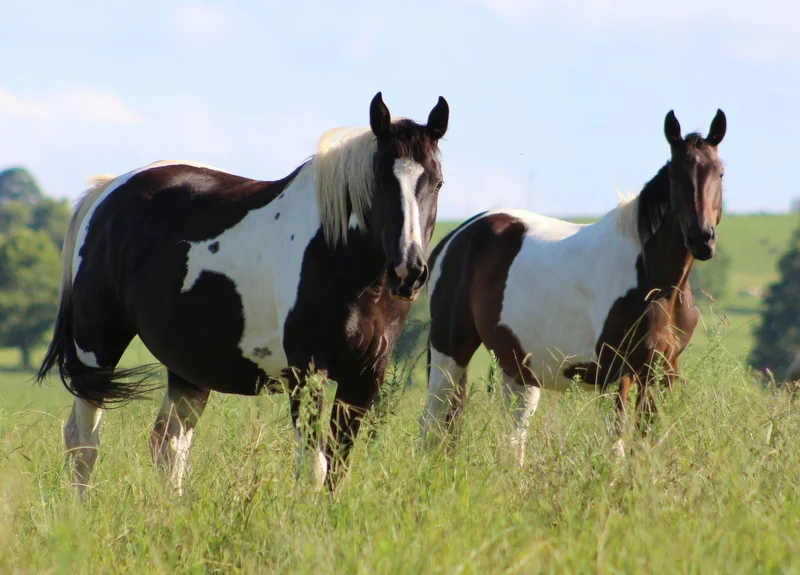
Understanding the Broodmare’s Nutritional Timeline
The equine pregnancy lasts approximately 340 days, or roughly 11 months. However, from a nutritional standpoint, this period is not uniform. The mare’s nutritional requirements follow a distinct pattern that mirrors fetal development, with the most dramatic changes occurring in the final trimester and continuing through early lactation.
During the first eight months of pregnancy, fetal growth is relatively minimal and the mare’s nutritional needs remain close to maintenance levels. This changes dramatically in the final three months when the fetus undergoes exponential growth. After birth, lactation represents the most nutritionally demanding period in the mare’s reproductive cycle, with energy and protein requirements nearly doubling compared to maintenance levels.
Understanding this timeline allows breeders to plan feeding programs strategically, avoiding both the pitfalls of overfeeding early in pregnancy and the critical error of underfeeding during late gestation and lactation.
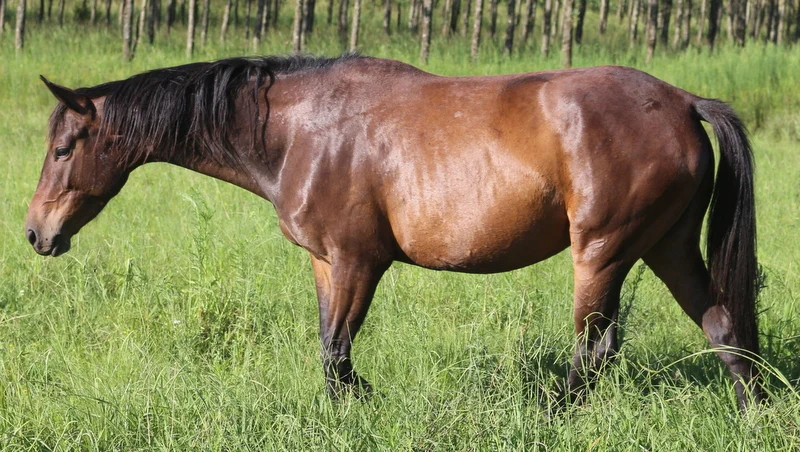
Early to Mid-Pregnancy: The Foundation Phase
The first two-thirds of pregnancy is often called the “easy keeper” phase of broodmare management. During this period, fetal weight gain is minimal—accounting for only about 35% of total fetal growth. Consequently, the mare’s nutritional requirements increase by only 10-15% above maintenance levels for mature mares, and even less for young, still-growing mares.
The Number One Goal: Maintain Body Condition
The primary nutritional goal during early to mid-pregnancy is maintaining a body condition score (BCS) of 5 to 6 on the Henneke 9-point scale. This moderate body condition provides the mare with adequate energy reserves without the complications associated with obesity. Mares entering pregnancy in poor condition should be gradually brought up to ideal BCS during these months, while overweight mares should be carefully managed to achieve weight loss without compromising fetal development.
Think of body condition score as your primary indicator of feeding success. A mare at BCS 5-6 has ribs that aren’t visible but can be easily felt with light pressure, a level topline, and minimal fat deposits along the neck and tailhead. This is your target throughout early pregnancy.
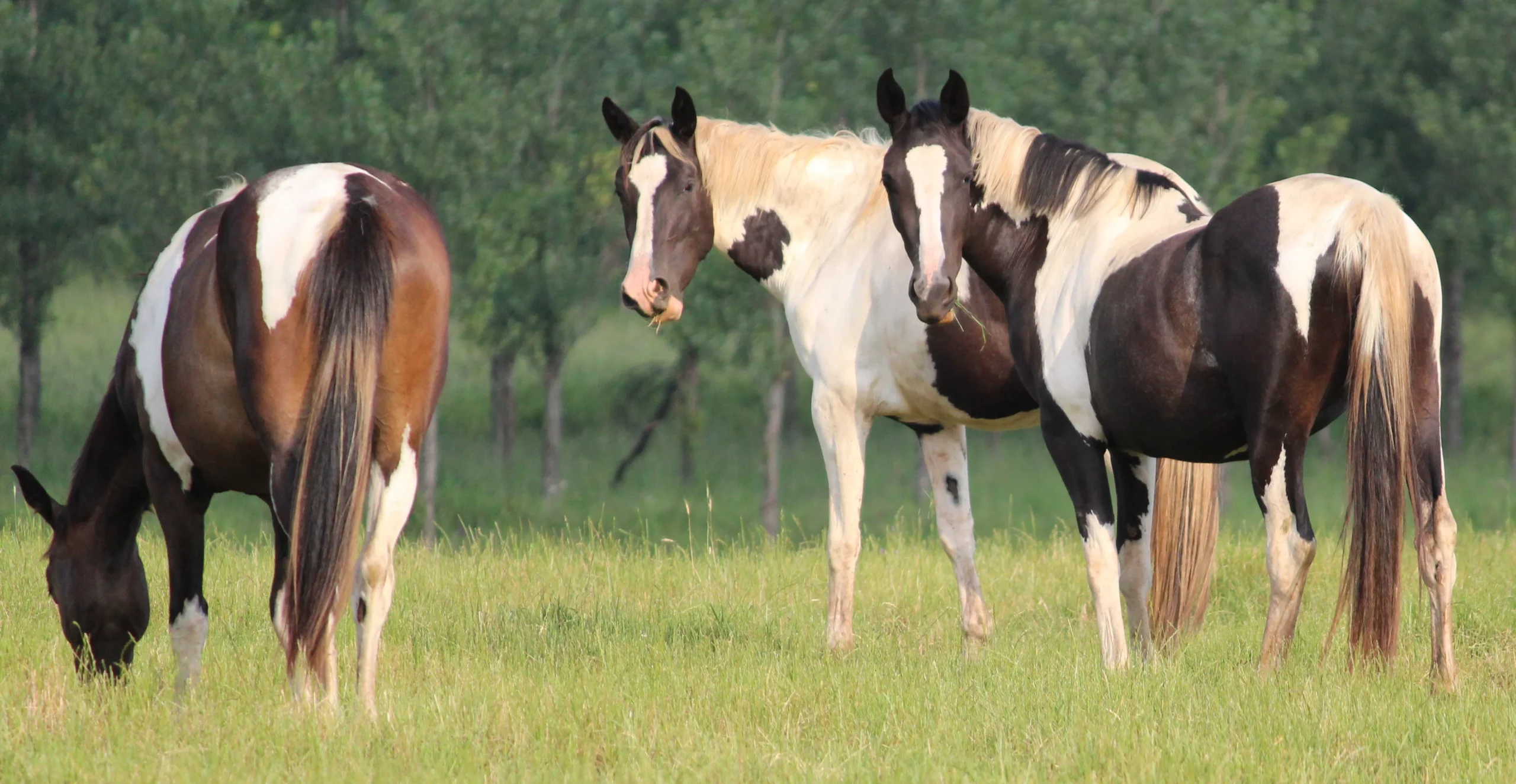
Quality Forage: The Foundation
Quality forage should form the backbone of the early pregnancy diet. Most mature mares in early to mid-pregnancy can meet their nutritional needs with good quality hay or pasture alone, provided the forage is analyzed and meets basic nutritional standards. Target forage intake should be 1.5-2% of body weight daily in dry matter. For a 500 kg (1,100 lb) mare, this translates to approximately 7.5-10 kg (16.5-22 lbs) of hay daily.
Grass hay such as timothy, orchard grass, or mixed grass hays are excellent choices. Legume hays like alfalfa can be used but may provide excess protein and calories, leading to unwanted weight gain if not carefully managed. Many breeders successfully feed a mix of grass and legume hay to balance nutritional content and palatability.
Pro Tip: Have your hay analyzed at a forage testing laboratory. For $20-40, you’ll get invaluable information about digestible energy, protein content, and mineral composition. This single investment can save you hundreds of dollars in unnecessary supplementation and help prevent costly nutritional mistakes.
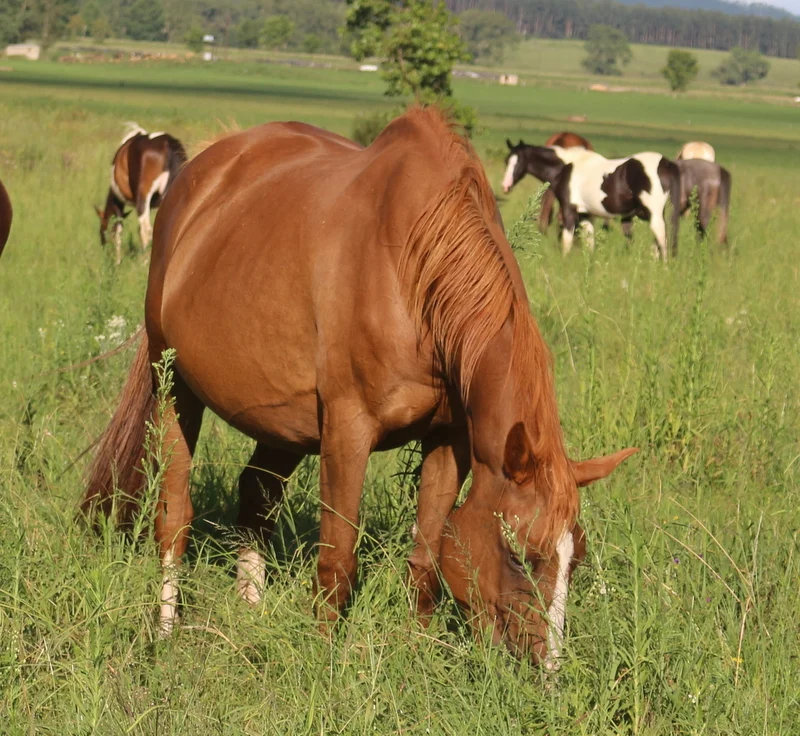
The Overfeeding Trap
One of the most common mistakes in broodmare management is overfeeding during early pregnancy. Well-meaning owners often increase concentrate feeds as soon as pregnancy is confirmed, leading to excessive weight gain. Obesity in broodmares is associated with numerous complications:
- Reduced fertility and conception rates in subsequent breeding seasons
- Increased risk of dystocia (difficult birth) due to excessive fetal size and poor muscle tone
- Higher incidence of metabolic disorders including insulin resistance
- Developmental orthopedic disease in offspring
- Reduced milk production during lactation
The key message for early pregnancy is simple: feed for maintenance, not for two. The fetus requires minimal additional nutrients during this period, and the mare’s body is remarkably efficient at meeting these needs from her baseline diet.
Essential Micronutrients in Early Pregnancy
While energy requirements remain relatively stable, ensuring adequate intake of certain micronutrients becomes critical even in early pregnancy. A properly balanced vitamin and mineral supplement designed for broodmares should be provided if forage quality is unknown or borderline.
Copper and Zinc: These trace minerals are essential for proper skeletal development and are often deficient in pasture and hay. Copper should be supplemented at 100-125 mg per day, while zinc requirements are 400-500 mg daily. These minerals work together to support bone and cartilage formation in the developing fetus.
Vitamin E: A powerful antioxidant, vitamin E is crucial for immune function and muscle development. Requirements increase to 1,000-2,000 IU daily for pregnant mares, particularly those on hay-based diets with limited access to fresh pasture. Fresh grass is rich in vitamin E, but it degrades rapidly in stored hay.
Selenium: Working synergistically with vitamin E, selenium is essential but must be carefully managed as it has a narrow margin of safety. Provide 1-3 mg daily depending on regional soil levels. Many areas have selenium-deficient soils, making supplementation necessary, but be cautious not to over-supplement.
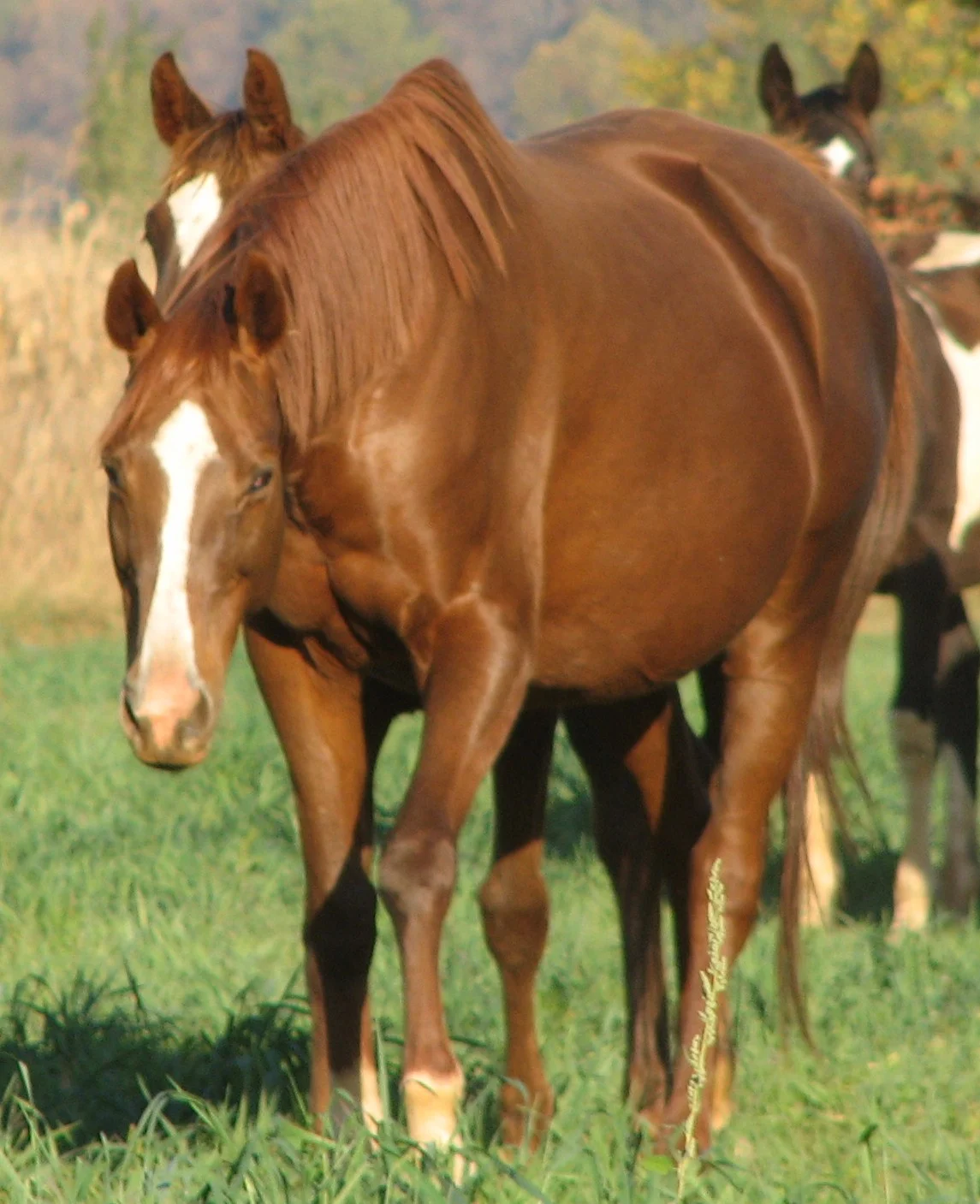
Practical Feeding Strategy for Early Pregnancy
Here’s a simple, practical approach for feeding mares during the first eight months of pregnancy:
Step 1: Provide free-choice quality grass hay or managed pasture access (1.5-2% of body weight daily)
Step 2: Add a balanced vitamin and mineral supplement formulated for broodmares (follow manufacturer’s recommendations)
Step 3: Only add concentrate feed if the mare is losing body condition or is below BCS 5
Step 4: Assess body condition score every 2-3 weeks and adjust feed accordingly
Step 5: Ensure constant access to clean, fresh water and a quality salt block
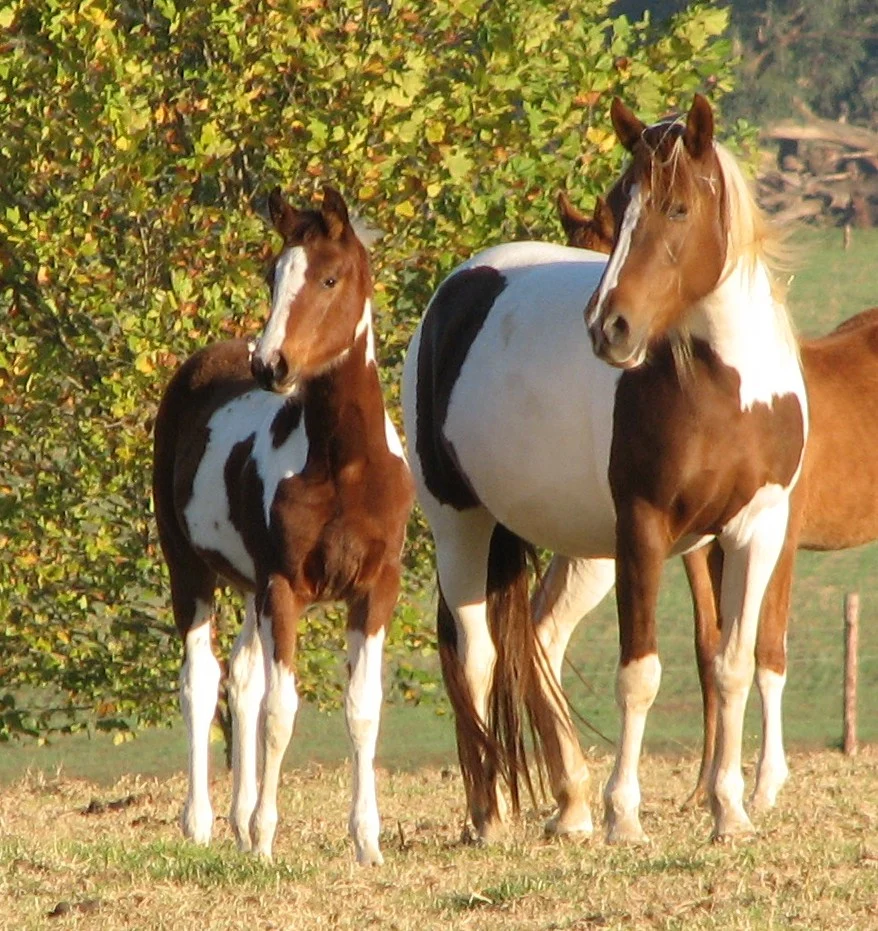
What’s Next in This Series
In Part 2 of our series, we’ll explore the dramatic nutritional changes needed during late pregnancy (months 9-11), when fetal growth accelerates rapidly and the mare’s nutritional demands increase significantly. We’ll cover exactly how much to increase feed, which nutrients become critical, and how to prepare your mare for successful lactation.
Don’t miss the other posts in this series:
- Part 1: Broodmare Nutrition Basics (You are here)
- Part 2: Late Pregnancy Nutrition
- Part 3: Feeding the Lactating Mare
- Part 4: Essential Nutrients for Broodmares
- Part 5: Practical Feeding Strategies & Common Mistakes
Want the Complete Guide?
Download our comprehensive Broodmare Nutrition Guide (PDF) for free! This complete resource includes all five parts of our series plus additional feeding charts, body condition score illustrations, and quick reference guides.
© 4 the loveofhorses – All Rights Reserved
